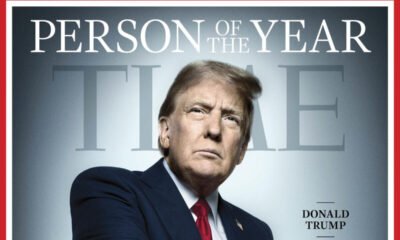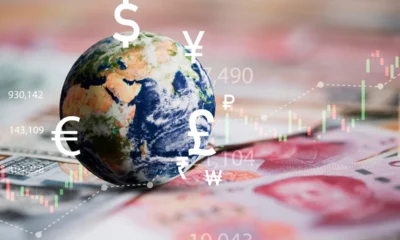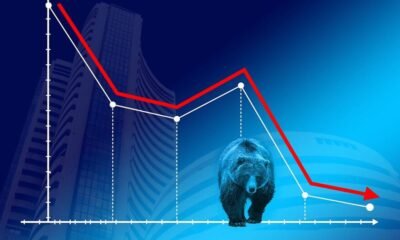Published
1 week agoon

Singapore’s economy expanded by 4.4% in 2024, marking its fastest annual growth since 2021, according to government data. The surge was driven by strong performances in the wholesale trade, finance and insurance, and manufacturing sectors.
The economy had grown by 1.8% in 2023.
For the fourth quarter of 2024, GDP increased by 5% year-on-year, surpassing the 4.7% forecast by economists but falling short of the 5.7% expansion recorded in the previous quarter. The figure also exceeded the advance estimate of 4.3% announced on January 2.
This economic data serves as the final key indicator before Prime Minister Lawrence Wong unveils the country’s 2025 budget on February 18.
Sectoral Performance and Growth Outlook
While key sectors like manufacturing and finance bolstered economic growth, Singapore’s retail trade and food and beverage sectors contracted. The Ministry of Trade and Industry (MTI) attributed the decline to consumers diverting spending to overseas travel.
Singapore has maintained its GDP growth forecast at 1%-3% for the full year of 2025. The MTI stated that external demand conditions for 2025 are expected to remain largely unchanged, as GDP growth in the country’s key trading partners is anticipated to ease from 2024 levels.
“There is a large cone of uncertainty surrounding the outlook of the U.S. economy, with its trajectory depending on the policies of the new U.S. administration,” the MTI noted.
Likewise, China’s GDP growth is also expected to moderate due to slowing merchandise exports and investment, impacted by tariff hikes and industrial overcapacity.
MTI forecasts that Singapore’s manufacturing and trade-related services sectors will expand, particularly in electronics, fueled by robust demand for semiconductor chips in PC, smartphone, and data center markets.
Additionally, growth is expected in information and communications, as well as finance and insurance. However, consumer-facing industries such as retail trade and food and beverage are projected to remain sluggish, primarily due to locals shifting spending overseas. Despite this, a recovery in international visitor arrivals is likely to provide some support.
Market Insights and Risks
Maybank analyst Chua Hak Bin noted that 2025 will be a more uncertain year, with full-year GDP growth estimated at 2.6%, aligning with the upper range of MTI’s forecast. “Trump’s broadening tariff war will slow growth and trade in 2025, particularly in the second half,” he said.
Domestically, easing monetary conditions, a generous pre-election budget, and increased construction activity are expected to cushion the impact of potential trade disruptions and sustain economic momentum.

Asia-Pacific Markets Mixed as Investors Assess Trump’s Reciprocal Tariffs Plan
Meanwhile, Asia-Pacific markets displayed a mixed performance on Wednesday as investors digested former U.S. President Donald Trump’s proposed plan for reciprocal tariffs, which could potentially disrupt global trade flows. With key economies in the region closely linked to U.S. trade policies, market participants remained cautious about the implications of a protectionist stance should Trump return to the White House.
Regional Market Performance
Japan’s Nikkei 225 edged higher by 0.4%, continuing its positive momentum driven by strong corporate earnings and a weaker yen that favored export-heavy industries. The broader Topix index also gained 0.3%, reflecting investor confidence in the resilience of Japanese equities despite external trade uncertainties.
In contrast, Hong Kong’s Hang Seng Index dipped 0.6%, weighed down by concerns over China’s trade outlook. Investors remained wary of escalating U.S.-China trade tensions, which could impact key sectors such as technology and manufacturing. Mainland China’s Shanghai Composite saw a modest decline of 0.2%, with traders adopting a wait-and-watch approach amid geopolitical uncertainties.
South Korea’s Kospi index fluctuated before settling flat, as gains in the semiconductor sector balanced out losses in other blue-chip stocks. Meanwhile, Australia’s ASX 200 slid 0.5%, led by declines in mining and energy stocks following weaker commodity prices.
Trump’s Reciprocal Tariffs
The mixed performance across the region illustrates investor uncertainty surrounding Trump’s proposed reciprocal tariff plan, which aims to impose equal tariffs on countries that levy higher duties on U.S. goods. The potential shift toward protectionist policies has raised concerns about supply chain disruptions and increased costs for businesses reliant on global trade.
Analysts caution that Asian economies with significant trade exposure to the U.S., such as China, South Korea, and Japan, could face renewed pressure if Trump’s policies materialize. While some sectors, particularly domestic-focused industries, may remain insulated, exporters and multinational corporations are bracing for potential volatility.
The Last Bit


Why Are Japanese Companies Not Happy With Trump? How Trump 2.0 Is Shaking The World Into A ‘Rude’ Awakening?


Global Economic Pulse, UK’s Surprise Growth, US Inflation Jumps While China And Japan Battle It Out—Who’s Leading And Who’s Lagging?


And The Trade Wars Begin…Disruptions Ahead! Trump’s Promise Of Tariffs Against Mexico, Canada, And China Comes To Fruition, But Not Without Retaliation. Multifold Economies to Be Affected


It’s Simple—Indian Govt Isn’t Tightening Spending—It Just Isn’t Spending Enough. How This Has Costed India’s Growth Story


Budget 2025. What’s FM’s Game Plan? Boost Growth, Cut Deficit, Or Finally Listen To The Struggling Middle Class?


The Stock Market’s Cracking—And It’s Not Pretty. FIIs Exodus But Analysts Sight Long Term Potential Despite Rs 32,00,000 Core Investor Wealth Gone In 2025. What Is The Bear-ish Deal Here?
